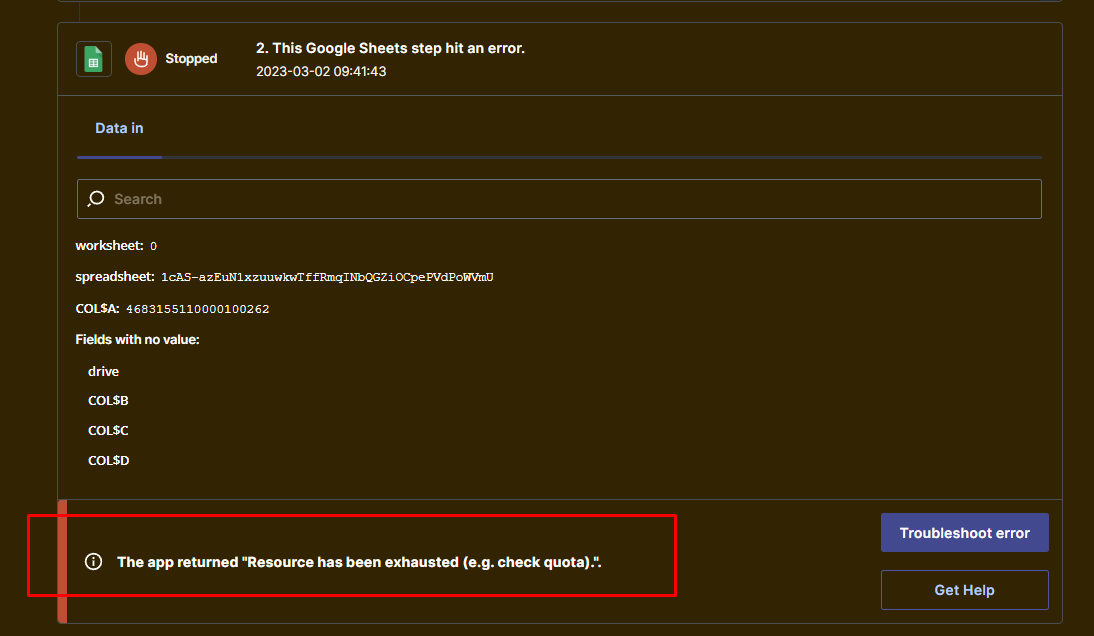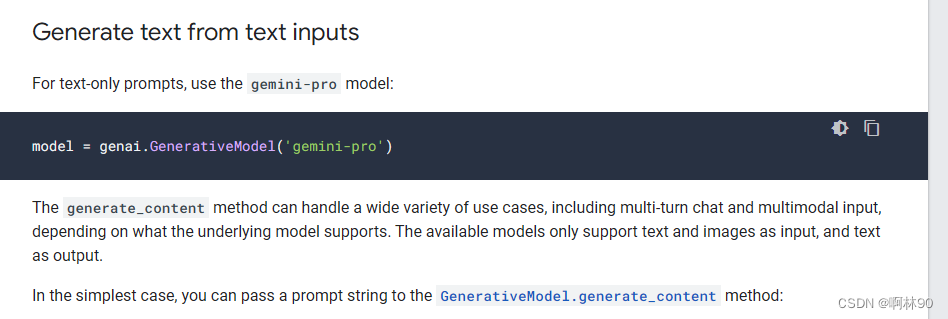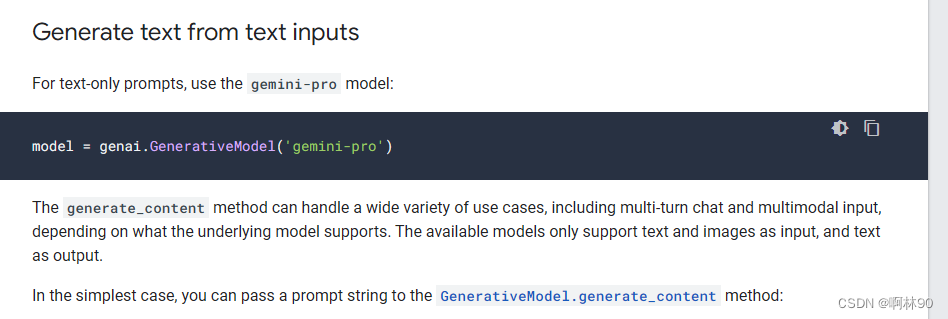Best CRM and marketing automation for small business is crucial for growth. This guide explores how the right tools can streamline operations, boost sales, and enhance customer relationships. We’ll delve into identifying your business needs, exploring various software options, mastering marketing automation features, managing data effectively, and calculating your return on investment. Ultimately, we aim to equip you with the knowledge to choose the perfect solution to fuel your small business’s success.
From defining your specific requirements and selecting the appropriate CRM platform to implementing effective marketing automation strategies and measuring your ROI, we’ll provide a comprehensive overview of the entire process. We’ll examine both integrated and standalone solutions, highlighting their respective advantages and disadvantages for small businesses. We’ll also address critical aspects like data integration, security, and compliance, ensuring you’re well-informed about every facet of implementing a successful CRM and marketing automation system.
Defining Needs for Small Businesses: Best Crm And Marketing Automation For Small Business

Small businesses often face unique challenges in managing customer relationships and implementing effective marketing strategies. Limited resources, both in terms of budget and personnel, often necessitate a streamlined and efficient approach to customer interaction and marketing automation. Choosing the right CRM and marketing automation tools can significantly impact a small business’s growth and profitability. Understanding the specific needs and selecting the appropriate tools are crucial steps in achieving success.
Three key challenges small businesses face regarding customer relationship management are:
Key Challenges in CRM for Small Businesses
Small businesses frequently struggle with balancing multiple tasks, leading to inefficiencies in managing customer interactions. They may lack dedicated personnel for CRM management, relying instead on existing staff who may already be overburdened. This often results in inconsistent customer experiences and a lack of centralized data about customer preferences and interactions. Furthermore, the cost of implementing and maintaining a CRM system can be a significant barrier for businesses with limited budgets.
Choosing a solution that aligns with their specific needs and financial constraints is essential.
Essential CRM Features for Small Businesses, Best crm and marketing automation for small business
Given resource constraints, small businesses need a CRM that offers essential functionality without unnecessary complexity. The following features are particularly important:
- Contact Management: A robust system for storing and organizing customer information, including contact details, purchase history, and communication logs.
- Lead Management: Tools for tracking leads, assigning them to sales representatives, and managing the sales pipeline. This includes features for lead scoring and prioritization.
- Reporting and Analytics: Basic reporting capabilities to track key metrics such as sales conversions, customer acquisition costs, and customer lifetime value. These insights help inform business decisions and improve marketing strategies.
- Customer Support Features: Tools to manage customer inquiries and support requests efficiently, potentially including features for ticketing and knowledge base integration.
Integrated vs. Standalone CRM and Marketing Automation Solutions
Small businesses must carefully consider whether to opt for an integrated CRM and marketing automation platform or use separate, standalone solutions. Each approach presents distinct advantages and disadvantages.
| Feature | Integrated Solution | Standalone Solution |
|---|---|---|
| Cost | Potentially higher initial investment, but often offers better long-term value due to streamlined workflows and reduced redundancy. | Lower initial cost, but may require additional investments in integrations and potentially lead to higher overall costs due to duplicated functionalities. |
| Data Management | Centralized data repository offering a unified view of customer interactions across marketing and sales. | Data may be siloed across different platforms, leading to potential inconsistencies and difficulties in gaining a holistic view of the customer. |
| Workflow Efficiency | Streamlined workflows due to seamless data exchange between CRM and marketing automation features. | Requires manual data transfer between platforms, leading to potential delays and errors. |
| Scalability | Generally offers better scalability as the business grows, adapting to changing needs without requiring significant platform changes. | May require significant upgrades or replacements as the business grows and its requirements evolve. |
Exploring CRM Software Options

Choosing the right CRM is crucial for small businesses to effectively manage customer relationships and streamline sales processes. The market offers a wide variety of options, each with its own strengths and weaknesses. Understanding your specific needs, as discussed previously, will guide you towards the best fit for your business. This section explores several popular CRM platforms, comparing their features and pricing models to aid in your decision-making.
Popular CRM Platforms for Small Businesses
Selecting the right CRM often hinges on budget and required features. Below are five popular options categorized by their pricing model, offering a range of functionalities and cost structures to accommodate various small business needs.
- HubSpot CRM (Freemium): Offers a robust free plan with ample features for smaller businesses, scaling to paid plans as needs grow.
- Zoho CRM (Subscription): A comprehensive CRM with a tiered subscription model, providing flexible options based on the number of users and features required.
- Salesforce Sales Cloud (Subscription): A leading CRM, known for its powerful features but generally aimed at larger enterprises; however, their Essentials plan offers a more accessible entry point for smaller businesses.
- Freshsales (Subscription): A user-friendly CRM with a focus on sales automation, offering various subscription tiers to cater to different business sizes.
- Pipedrive (Subscription): Designed with a clean, intuitive interface, Pipedrive excels at sales pipeline management and offers straightforward pricing plans.
CRM Comparison Table
The table below compares the five CRMs across key features, ease of use, and integration capabilities. Remember that individual experiences may vary.
| CRM | Pricing Model | Contact Management | Sales Pipeline | Reporting | Ease of Use | Integration Capabilities |
|---|---|---|---|---|---|---|
| HubSpot CRM | Freemium | Excellent; includes contact forms and email integration | Good; visual pipeline management | Good; basic reporting and dashboards | Very Easy | Excellent; integrates with many popular apps |
| Zoho CRM | Subscription | Excellent; robust features for contact organization | Excellent; customizable pipeline views | Excellent; detailed reports and analytics | Easy | Good; wide range of integrations |
| Salesforce Sales Cloud | Subscription | Excellent; highly customizable contact management | Excellent; advanced sales pipeline features | Excellent; powerful reporting and analytics | Moderate | Excellent; extensive integration options |
| Freshsales | Subscription | Good; efficient contact management tools | Excellent; strong focus on sales pipeline automation | Good; clear and concise reports | Easy | Good; integrates with several popular platforms |
| Pipedrive | Subscription | Good; focuses on contact information relevant to sales | Excellent; intuitive visual pipeline | Good; sales performance reports | Very Easy | Good; integrations available |
Typical Customer Journey in a Small Business CRM
Understanding the typical user flow within a CRM helps businesses optimize their processes and maximize the system’s benefits.
A user flow diagram would typically show a series of steps: A new lead enters the system (perhaps through a website form or manual entry). The lead is then qualified, assigned to a sales representative, and moved through various stages of the sales pipeline (e.g., initial contact, proposal, negotiation, closing, and post-sale follow-up). At each stage, relevant information is recorded, including communication logs, deal progress, and customer interactions.
Reporting and analytics tools then provide insights into sales performance, allowing for data-driven decision-making and process improvements. The entire process, from lead capture to customer retention, is managed within the CRM, creating a centralized view of customer interactions. This diagram would visually represent this flow using boxes (representing actions or stages) and arrows (representing transitions between stages).
Marketing Automation Features for Small Businesses
Marketing automation empowers small businesses to streamline their marketing efforts, personalize customer interactions, and ultimately boost sales. By automating repetitive tasks and providing data-driven insights, these tools allow business owners to focus on strategic initiatives and build stronger customer relationships. This section will explore key features and provide practical examples of their application.
Three core marketing automation features offering significant benefits to small businesses are email marketing, social media scheduling, and lead nurturing. These features, when integrated effectively, create a powerful engine for growth.
Email Marketing Automation
Email marketing automation allows for the creation and scheduling of targeted email campaigns, personalized based on customer segments and behavior. This eliminates the need for manual sending and ensures consistent communication. For example, a small bakery could automate a “Happy Birthday” email to customers on their birthdays, offering a discount on their next purchase. This personalized touch strengthens customer loyalty and drives repeat business.
Another example is sending automated email sequences to welcome new subscribers, providing them with valuable content and guiding them towards a purchase. This approach increases engagement and improves conversion rates.
Social Media Scheduling and Posting
Social media scheduling tools allow small businesses to plan and schedule posts across various platforms in advance. This ensures consistent brand presence and engagement, even with limited time. Imagine a boutique clothing store scheduling posts showcasing new arrivals, behind-the-scenes glimpses, and customer testimonials throughout the week. This consistent presence maintains audience engagement and increases brand visibility. Further, using analytics provided by these tools, the store can track the performance of different types of posts and optimize future content for maximum impact.
Lead Nurturing
Lead nurturing involves delivering targeted content to potential customers at different stages of the sales funnel. Marketing automation enables the creation of automated email sequences or workflows that deliver relevant information based on customer actions. For example, a software company could use lead nurturing to guide potential clients through a series of emails explaining the product’s features, addressing common concerns, and ultimately prompting them to request a demo.
This process increases lead conversion rates by providing valuable information at the right time.
Implementing a Simple Email Marketing Campaign
Let’s Artikel a step-by-step guide to implementing a simple email marketing campaign using a CRM’s marketing automation tools (assuming a CRM like HubSpot or Mailchimp).
- Define your target audience: Identify the specific customer segment you want to reach with your campaign. This could be based on demographics, purchase history, or website behavior.
- Set your campaign goal: Determine what you want to achieve with your email campaign. This might be increasing website traffic, driving sales, or generating leads.
- Create your email content: Design an engaging email that aligns with your campaign goal. Include a clear call to action (CTA).
- Segment your audience: Use your CRM to segment your email list based on the criteria defined in step 1.
- Schedule your email: Use your CRM’s automation tools to schedule the email to be sent to your segmented audience at an optimal time.
- Monitor and analyze results: Track key metrics such as open rates, click-through rates, and conversions to measure the campaign’s success and optimize future campaigns.
Integration and Data Management

Effective integration and robust data management are critical for maximizing the return on investment (ROI) from your CRM and marketing automation systems. A well-integrated system allows for seamless data flow between your CRM, e-commerce platform, accounting software, and other business tools, providing a holistic view of your customer interactions and business performance. This integrated approach eliminates data silos and streamlines workflows, leading to improved efficiency and better decision-making.Data integration facilitates a unified view of customer interactions across various touchpoints.
For example, a customer’s purchase history from your e-commerce store can automatically update their profile in your CRM, providing valuable context for sales and marketing teams. Similarly, integrating your accounting software allows you to track revenue generated from specific marketing campaigns, providing crucial data for campaign optimization. This interconnectedness fosters a more accurate and comprehensive understanding of your customer base and business operations.
Customer Data Segmentation for Targeted Marketing
Effective segmentation allows businesses to tailor marketing messages to specific customer groups, maximizing campaign effectiveness and ROI. Instead of sending generic emails to your entire list, you can create segments based on demographics (age, location, gender), purchase history (high-value customers, repeat buyers), website behavior (engagement level, product interest), or other relevant criteria. For instance, a small clothing boutique could segment its customers into “frequent buyers,” “new customers,” and “lapsed customers,” allowing for personalized email campaigns tailored to each group’s needs and purchase behavior.
This approach significantly improves conversion rates and customer engagement compared to untargeted marketing. A well-defined segmentation strategy enables the delivery of highly relevant content, improving customer satisfaction and driving sales.
Risks of Poor Data Management and Strategies for Data Security and Compliance
Poor data management within a CRM system can lead to several serious consequences, including inaccurate reporting, ineffective marketing campaigns, missed sales opportunities, and damaged customer relationships. Inaccurate data can skew your understanding of customer behavior and preferences, leading to poorly targeted marketing efforts and wasted resources. Furthermore, data breaches resulting from inadequate security measures can expose sensitive customer information, leading to legal repercussions and reputational damage.
For example, a small business failing to comply with GDPR regulations could face significant fines and legal action.To mitigate these risks, small businesses should implement robust data security measures, including strong passwords, access controls, regular data backups, and encryption. They should also establish clear data governance policies that define how data is collected, stored, used, and protected. Regular data audits are crucial to identify and correct inaccuracies.
Compliance with relevant data privacy regulations (such as GDPR, CCPA) is paramount. Investing in a CRM system with built-in security features and adhering to best practices for data management is essential for protecting sensitive information and maintaining customer trust. This proactive approach not only safeguards against potential legal and financial liabilities but also fosters a positive brand image and builds stronger customer relationships.
Cost and Return on Investment (ROI)

Investing in CRM and marketing automation software requires careful consideration of costs and the potential return on investment. Small businesses, often operating on tighter budgets, need to strategically evaluate various options to ensure a worthwhile expenditure. This section explores pricing models, key performance indicators (KPIs) for measuring ROI, and a hypothetical case study demonstrating the potential for positive returns.
Pricing Structures of CRM/Marketing Automation Platforms
Three common CRM/marketing automation platforms offer varying pricing structures tailored to different business needs and scales. Understanding these differences is crucial for making an informed decision.
| Platform | Pricing Model | Value Proposition for Small Businesses |
|---|---|---|
| HubSpot CRM (Free & Paid) | Freemium model with tiered paid plans based on features and number of users. | Offers a robust free plan suitable for smaller businesses starting out, allowing them to gradually upgrade as their needs evolve. The paid plans provide advanced features like marketing automation and sales analytics. |
| Zoho CRM (Paid) | Subscription-based pricing with different plans offering varying levels of features and user capacity. | Provides a comprehensive suite of tools at a competitive price point, making it accessible to many small businesses. Scalability allows for growth without significant disruptions. |
| Salesforce Sales Cloud (Paid) | Subscription-based, typically requiring a higher initial investment due to its extensive features and scalability. | Best suited for small businesses anticipating significant growth and requiring advanced functionalities. Its robust features can streamline complex sales processes. However, the higher cost may be a barrier for some. |
Key Metrics for Measuring ROI
Tracking the right metrics is essential for determining the effectiveness of your CRM and marketing automation investment. Small businesses should focus on KPIs that directly reflect their business goals.
Here are some key metrics to track:
- Customer Acquisition Cost (CAC): The total cost of acquiring a new customer. A decrease in CAC indicates improved efficiency in marketing efforts.
- Customer Lifetime Value (CLTV): The predicted revenue a customer will generate throughout their relationship with the business. A higher CLTV demonstrates successful customer retention and engagement.
- Marketing ROI: Measures the return on investment from marketing activities. Calculated as (Revenue generated – Marketing costs) / Marketing costs.
- Sales Conversion Rate: The percentage of leads that convert into paying customers. An increase reflects improved sales processes and targeting.
- Lead Generation Rate: The number of leads generated over a specific period. Growth indicates effective marketing strategies.
Hypothetical Case Study: Positive ROI with HubSpot
Imagine a small e-commerce business selling handcrafted jewelry. Initially, they relied on social media marketing with inconsistent results. They implemented HubSpot’s free CRM to manage customer interactions and then upgraded to a paid plan to utilize its marketing automation features. They segmented their audience, created targeted email campaigns, and automated follow-up processes.
Within six months, they saw the following results:
- Lead Generation Rate increased by 40% due to targeted advertising and email marketing.
- Sales Conversion Rate improved by 25% thanks to automated follow-ups and personalized messaging.
- Customer Lifetime Value increased by 15% due to improved customer retention through targeted email nurturing.
By meticulously tracking their KPIs, they demonstrated a significant positive ROI on their HubSpot investment, justifying the cost through increased revenue and improved efficiency.
Choosing the Right Solution
Selecting the optimal CRM and marketing automation platform is crucial for small business success. The right system streamlines operations, improves customer relationships, and fuels marketing effectiveness. A poorly chosen system, however, can lead to wasted resources and hinder growth. Careful consideration of key factors and a systematic evaluation process are paramount.
Critical Factors for Selection
Three critical factors small businesses should prioritize when choosing a CRM and marketing automation platform are scalability, ease of use, and integration capabilities. Scalability ensures the system can adapt to the business’s growth without requiring a complete overhaul. Ease of use minimizes the learning curve for employees and maximizes adoption rates. Robust integration capabilities ensure seamless data flow between different business applications.
For example, a small e-commerce business might need a system that integrates with its online store, shipping provider, and accounting software. This ensures a unified view of customer interactions and operational efficiency.
Vendor Selection Checklist
Before committing to a vendor, small business owners should thoroughly vet potential providers. This checklist helps ensure a proper evaluation:
- Pricing and Contract Terms: Examine the pricing model (subscription, one-time purchase, etc.), contract length, and hidden fees.
- Customer Support Availability: Assess the vendor’s support channels (phone, email, chat), response times, and overall responsiveness.
- Data Security and Privacy Measures: Verify the vendor’s security protocols, compliance certifications (e.g., GDPR, SOC 2), and data backup procedures.
- Feature Set and Customization Options: Confirm that the platform offers the necessary features (contact management, email marketing, lead scoring, etc.) and allows for customization to meet specific business needs.
- Integration Capabilities: Determine whether the platform integrates with existing business applications (e.g., accounting software, e-commerce platform).
- User Reviews and Testimonials: Research user reviews and testimonials on platforms like G2 or Capterra to gain insights into the vendor’s reputation and customer satisfaction.
- Implementation and Training Support: Inquire about the vendor’s implementation process, training resources, and ongoing support options.
- Scalability and Future Growth: Assess whether the platform can scale to accommodate future business growth and changing requirements.
Decision-Making Flowchart
A structured approach to vendor selection simplifies the process. This flowchart illustrates a decision-making process:
Last Point

Choosing the right CRM and marketing automation system is a significant decision for any small business. By carefully considering your needs, exploring available options, and understanding the importance of data management and ROI, you can significantly improve efficiency, enhance customer relationships, and drive substantial growth. Remember to leverage the resources and insights provided in this guide to make an informed decision that aligns perfectly with your business objectives and sets you on a path toward lasting success.
Essential FAQs
What is the difference between a CRM and marketing automation software?
A CRM (Customer Relationship Management) system manages customer interactions and data. Marketing automation software automates marketing tasks like email campaigns and social media scheduling, often integrating with a CRM.
How much does CRM software typically cost?
Costs vary widely depending on features and the number of users. Freemium options exist, while subscription-based plans range from affordable monthly fees to more expensive enterprise solutions.
Can I integrate my CRM with my existing accounting software?
Many CRMs offer integrations with popular accounting software, allowing for streamlined data flow and improved financial reporting. Check the specific CRM’s integration capabilities.
What are the key metrics to track for CRM ROI?
Key metrics include customer acquisition cost, customer lifetime value, sales conversion rates, marketing campaign ROI, and customer satisfaction.

